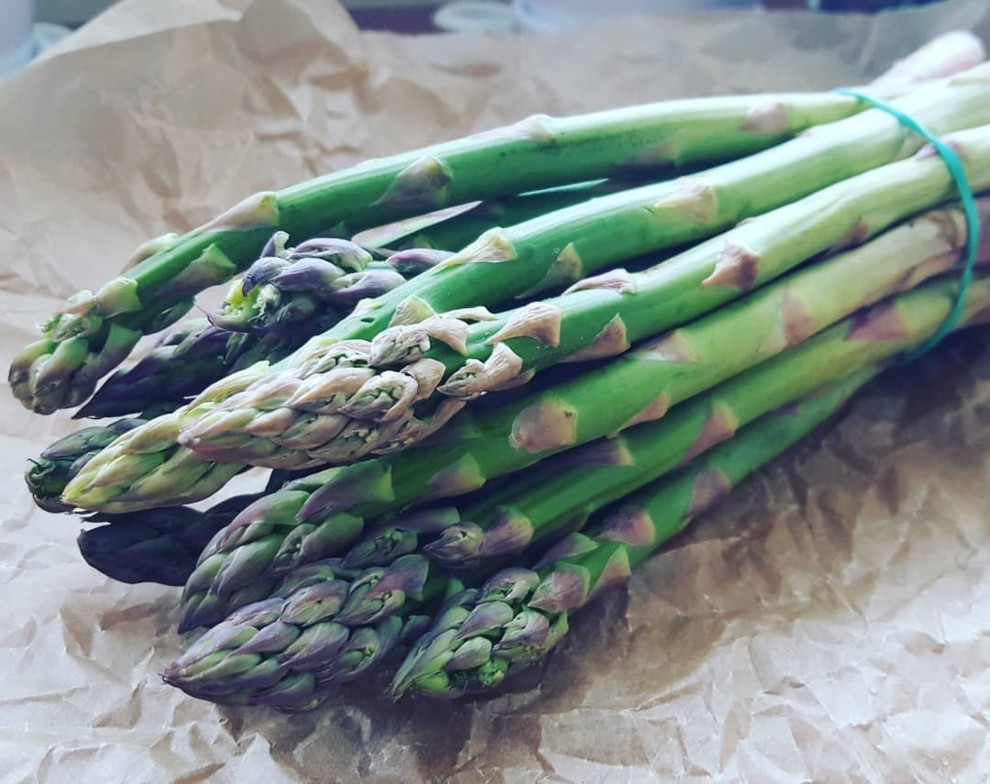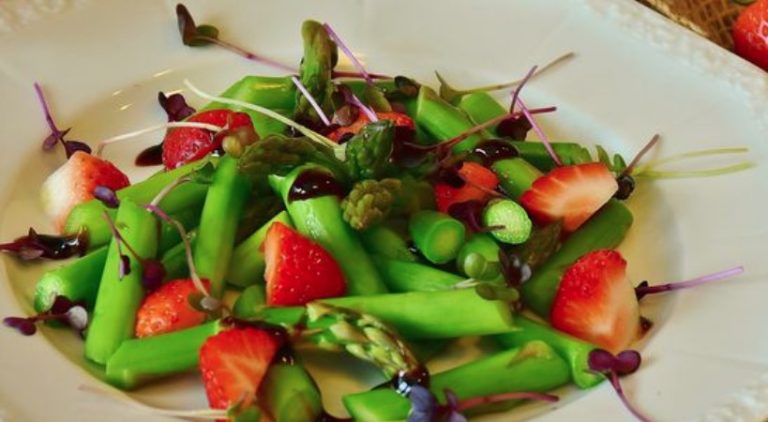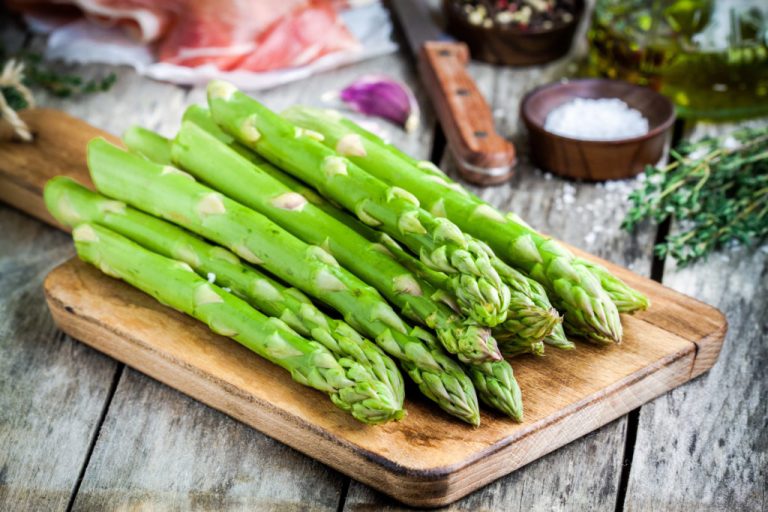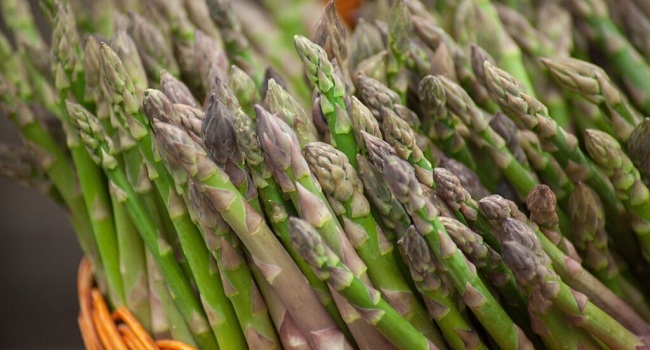If you want to eat asparagus raw, you should use thin spears. In this article you will find out what else you should pay attention to and the advantages and disadvantages of raw asparagus.
April to June is asparagus time in this country: this is when the healthy vegetables end up on the plates of asparagus lovers, often several times a week. Cooked asparagus is the most popular, but you can also roast or otherwise prepare asparagus.
What many people don’t know: You can also eat asparagus raw. We tell you what is important.
Eating raw asparagus: edible and healthy

Yes, you can also eat asparagus raw. The raw vegetable is neither poisonous nor indigestible. Raw asparagus is said to be particularly healthy:
100g of raw asparagus contains 2.2g of protein, 2g of fiber and virtually no fat. With a water content of 93 percent, asparagus in its raw form can help hydrate the body.
In addition, asparagus provides important minerals: 100 g of raw asparagus contain 24 mg of calcium, 14 mg of magnesium and 202 mg of potassium.
Of particular interest: raw asparagus is also rich in folate (52 µg per 100g), vitamin K (41.6 µg per 100g) and vitamin C (5.6 mg per 100g). In addition, asparagus provides vitamin E (1.13 mg per 100g) and vitamins B1 and B2. Many vitamins are heat-sensitive and would be largely lost during cooking.
A 2011 study confirms this. The scientists found that the longer asparagus is heated, the more nutrients are lost. The vegetables were even blanched – a preparation method that is considered gentle.
Asparagus has been shown to have a diuretic effect. This effect is said to be stronger with raw asparagus than in its cooked form – but we could not find any scientific evidence for this.
Note: It is of course not the case that cooked asparagus no longer contains any beneficial nutrients, as not all nutrients are heat-sensitive. Especially when it comes to vitamin C, vitamin B1 and vitamin B9, asparagus performs better in its raw form.
On the other hand, asparagus also contains ferulic acid, which according to the BBC, our body can only access well after heating. Ferulic acid has an antioxidant effect and can thus protect against oxidative stress. From a health point of view, it is therefore worth not always eating asparagus raw and instead varying the preparation methods.
Raw asparagus: taste and purchase recommendation
Raw asparagus does not differ from the cooked variant in terms of nutrients, but also in terms of taste: The typical asparagus aroma, which lovers appreciate so much, only develops under the influence of heat and is therefore missing in the raw preparation. Fresh asparagus is particularly juicy when raw and, in addition to the slightly nutty aroma, is also reminiscent of pea pods. Raw asparagus also tastes slightly sweet, which makes it particularly appetizing.
If you want to eat asparagus raw, you should prefer thin spears. The thicker the asparagus, the tart and bitter it tastes. In addition, asparagus tastes better the fresher it is. This is why regional asparagus is always ahead of imported goods.
You can eat both green and white asparagus raw. From an ecological point of view, however, green asparagus is more advisable, since white asparagus must be protected from the sunlight with plastic films when growing.
In general, we therefore recommend that you buy green asparagus regionally and seasonally. Organic quality is also important, as conventional asparagus is often contaminated with pesticides.
Prepare asparagus raw – it’s that easy
You always have to peel white asparagus. But don’t just throw away the peel: you can use it to prepare a delicious asparagus peel soup. If, on the other hand, you decide to use green asparagus, you should definitely leave the peel on. Most of the vitamins are just under the skin.
You can easily prepare raw asparagus:
Wash the asparagus.
If the lower end is purple-whitish and hard, you should definitely peel this part and cut off the mostly dried end.
If the asparagus is green all the way through, you only need to cut off the lower end a finger’s width. Alternatively, you can also break the asparagus – it usually breaks directly above the end that is too tight.
If the asparagus spears are very thick and the skin feels hard, peel only the bottom third of the asparagus.
You can then use the asparagus in any recipe.
You can eat the asparagus prepared in this way raw, for example, as follows:

Marinated asparagus: Cut the raw asparagus into fine strips and leave them in a marinade for about 20 minutes. In a separate article, we present five recipes for delicious marinades. You can serve the asparagus marinated in this way with fresh lettuce and, if necessary, some cheese.
Asparagus sticks with dip: You can use whole or halved asparagus stalks for dipping. This goes well with homemade hummus or pesto, for example. Also, try our vegan dips.
Mushroom and asparagus salad: cut into fine strips, you can use raw asparagus with fried mushrooms, tomatoes, and a delicious dressing made from olive oil, balsamic vinegar, honey, salt and pepper to create a delicious salad. You can find the whole recipe in our How to Prepare Green Asparagus article – just skip the step of frying the asparagus.
Tomato and asparagus salad with mozzarella: A raw vegetable salad made from asparagus, cherry tomatoes, spring onions and mozzarella cheese is also delicious. Serve with vinaigrette dressing.
Asparagus and strawberry salad: In this country, asparagus and strawberries are in season at the same time. That’s why you can use these two ingredients to prepare a delicious, special kind of salad. Just follow our asparagus recipe and skip the step of frying the asparagus.
Smoothie with asparagus: Those who like to experiment with asparagus can also prepare a smoothie with asparagus. However, you should start slowly at first, as the asparagus taste can quickly become too intense if the quantities are too large.
Tip: Try eating raw ginger – it is particularly rich in vitamins and nutrients. The same applies to many other foods: You can also eat zucchini raw, for example.






















